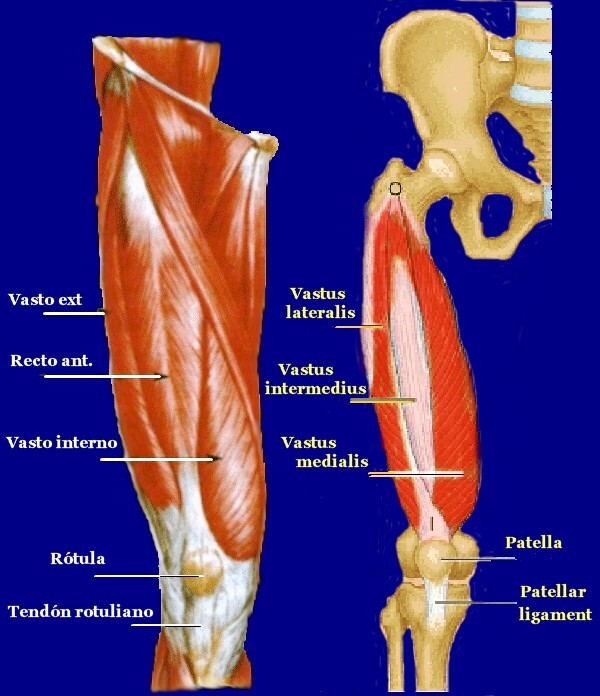The front thigh muscles tension can be caused by problems such as poor posture, stiffness in the joints of the hip, the rigid spine or too much neural stimulation in the thigh and hip flexors. The rigidity of the hip can do that you can move the joints of the same in all ranges of motion, rotation, flexion and extension.
Stiffness in the hip and knee
In knee extension Contracture is a well-known complication of severe femoral fractures, especially in the supracondilar region. What happens is the replacement of muscle tissue by fibrous tissue or accumulation of collagen fibers. The deformity is primarily secondary to contraction of the quadriceps and all the extensor mechanism suffers adhesions as mentioned above., knee extension stiffness can be intra-articular, associated with atrophy brosis or partial, affecting only the patellofemoral area. Participation of the inner collateral ligament that is at its maximum at 60 ° bending length is shortened with prolonged detentions causes extrarticulares has also been described are adhesions quadriceps by fibrosis to the femur in the fracture focus already the postsurgical scars, 3rd in the path of the fixing screws influence4., is also found in patients who remain large periods of time in knee extension who develop secondary contracture of the mechanism Extender in presenting quadriceps atrophy, is fibrous and shortens by restricting the knee flexion.
Initially according to the time and degree of rigidity, the release with Holmiun laser yag or laser 4th generation candles (both available in the unit) it is possible to get an extension and flexion are acceptable, but if the rigidity is important or old (several years) probably need to be associated with the laser technique a JUDET release.
Judet cuadriceplastia is a surgery that is performed by sequential steps and according to be achieved to improve the mobility will be continuing to the next step, stopping when you get adequate mobility. The incision starts at the knee and as structures released enlarges the scar in the direction of the hip, the aim is to get at least 90 degrees flexion, rehabilitation plays an important role in the recovery of muscle strength and maintenance of the amplitudes obtained joint intervention. This technique of Judet addresses sequentially components that block the extension of the knee and hip.

Figure 1: shows the set of structures forming the extensor apparatus, which must be released progressively.







